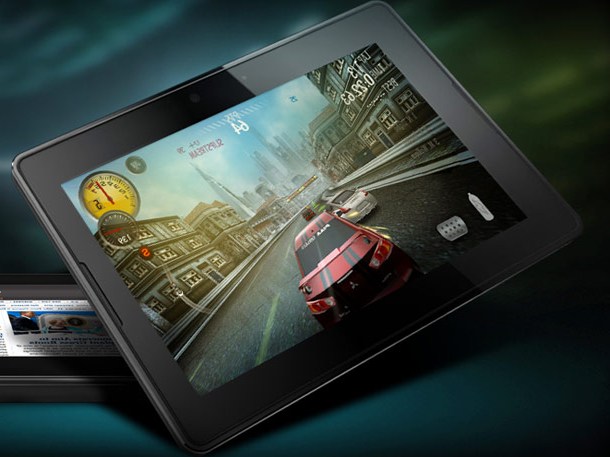RIM Playbook Tablet Has A Slick UI: First Look

We liked the tablet user interface when RIM let us play with the PlayBook at the CES show
Continued from page 1
The PlayBook’s operating system also emphasises multimedia functions such as videos and music, essential for the tablet market. The music-library interface is intuitive, and nothing one hasn’t seen in a thousand similar products. RIM will offer the PlayBook in 16GB, 32GB and 64GB models, so those people who really enjoy their apps and music and games and video should have a storage option that fits their needs.
In place of mechanical navigation buttons, RIM made the PlayBook’s case touch-sensitive. Flicking your finger along the device’s bottom-center BlackBerry logo brings up the home screen. Swiping the screen from side-to-side lets you cycle through active apps, and “flicking” those apps will deactivate them. If you’re well-versed in iOS or Android, these controls will feel unfamiliar for a few minutes, after which they become rapidly more intuitive.
Power for a “full day’s work”
After reports that the PlayBook had a poor battery life. RIM executives told eWEEK that the PlayBook will eventually provide enough power for a “full day’s work,” but that engineering to optimise the device’s battery is very much in process. Given how the device’s user interface encourages multitasking, a lack of battery power (especially when running multiple applications for long periods of time, as power users are wont to do) could be a deal-killer.
Besides Bluetooth tethering, PlayBook also offers Wi-Fi connectivity — and in a statement released during CES, Sprint said that the BlackBerry 4G PlayBook would be the first PlayBook model to include wide-area wireless connectivity. Sprint’s 4G network now includes 71 markets in the United States, where the carrier is promising to launch the PlayBook—at an unannounced price—sometime this summer.
A risky gamble on business tablets
But can the PlayBook succeed? RIM is taking a risky (some might say daring) bet by linking the device so tightly to its BlackBerry franchise. That potentially offers a substantial built-in audience that might not exist for a stand-alone tablet — but those who own a smartphone other than a BlackBerry might not necessarily gravitate toward the idea of jumping so wholeheartedly into RIM’s ecosystem. You could argue that the PlayBook’s Wi-Fi capability makes it useful even for those who don’t already own a BlackBerry, but given how many people and businesses lock down their Wi-Fi networks to outsiders, that limits a Wi-Fi-only device’s use outside the home or office.
Plus, the iPad and Android-based devices have been making substantial inroads over the past few quarters into the enterprise space, traditionally RIM’s stronghold. A December survey by research firm ChangeWave suggested that 14 percent of corporations are anticipating a tablet purchase in the first quarter of 2011, with 9 percent of those considering the RIM PlayBook — enough to place RIM even with Dell, which announced a new 7-inch tablet at CES, but lagging far behind the iPad.
Despite the competition, RIM remains bullish on its tablet prospects. “I think the PlayBook clearly sets the bar way higher on performance, and you’re going to see more,” Jim Balsillie, co-CEO of RIM, told analysts and media during the company’s 16 Dec earnings call. “I think with the PlayBook … we’re going to set the new standard on performance and tools, very powerful tools. And we’re growing really fast.”
Whether the PlayBook can attract app developers and an audience remains to be seen. But based on first impressions, it seems that RIM has the hardware and software platform to make a solid run at the tablet market in 2011.